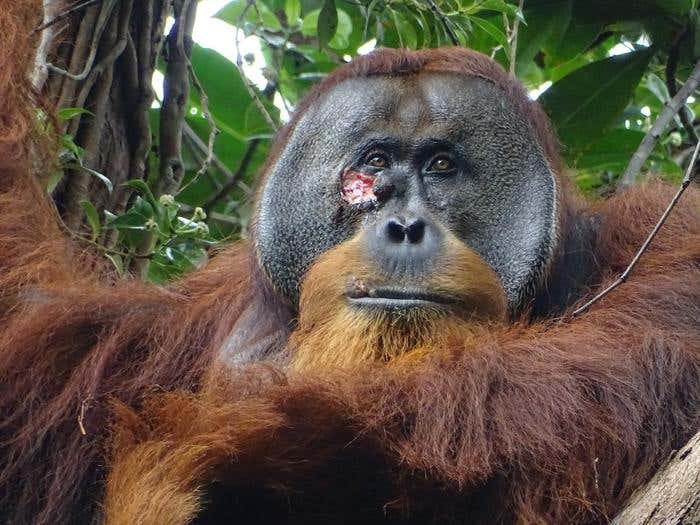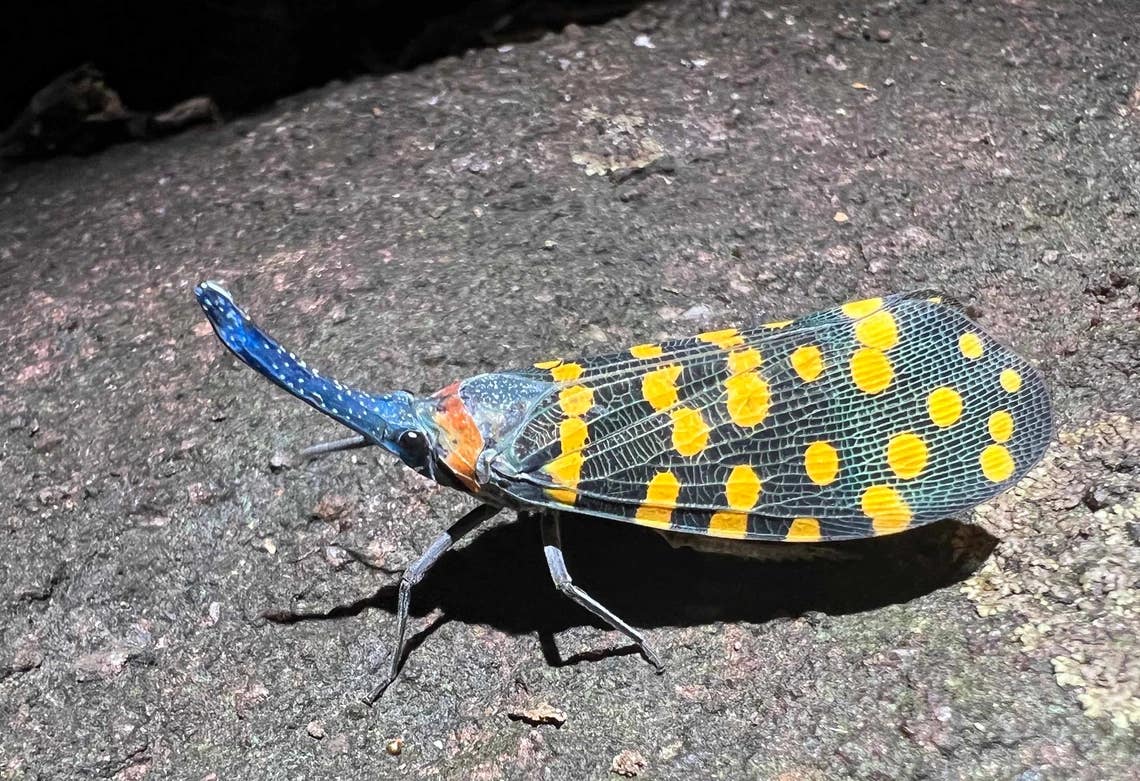Orangutan treats wound with medicinal plant: A first for great apes
Wound care behaviors have been documented in some animals, the deliberate use of plants with healing properties remained unseen – until now

Facial wound of adult flanged male Rakus (photo taken two days before applying the plant mesh to the wound). (CREDIT: Armas / Suaq Project)
Traditionally, self-medication in animals has been limited to observations of them ingesting specific plant parts, often at low frequencies. While wound care behaviors have been documented in some animals, the deliberate use of plants with healing properties remained unseen – until now.
A new study published in Scientific Reports reveals the first instance of a wild Sumatran orangutan actively treating a facial wound with a medicinal climbing plant.
The research, led by cognitive and evolutionary biologists from the Max Planck Institute of Animal Behavior (Germany) and Universitas Nasional (Indonesia), took place at the Suaq Balimbing research site in Sumatra, Indonesia. Home to around 150 critically endangered orangutans, the site provided a unique opportunity to observe their behavior.
Process of wound healing. Rakus fed on and later applied the masticated leaves of Fibraurea tinctoria to his facial wound on June 25. On June 26 he was again observed feeding on Fibraurea tinctoria leaves (see photo). By June 30 the wound was closed and by August 25 was barely visible anymore. (CREDIT: Scientific Reports)
The study focused on a male orangutan named Rakus. Researchers noticed a facial wound, likely sustained during a fight with another male. Three days later, Rakus exhibited remarkable behavior. He selectively detached leaves from a climbing plant known locally as Akar Kuning (Fibraurea tinctoria).
After chewing the leaves, Rakus meticulously applied the resulting juice directly onto his wound for several minutes. He then covered the wound entirely with the chewed plant material.
Akar Kuning is traditionally used in Southeast Asian medicine for its anti-inflammatory and pain-relieving properties. Chemical analysis confirmed the presence of compounds known to have antibacterial, antifungal, and antioxidant properties beneficial for wound healing.
Related Stories:
“This behavior suggests an understanding of the plant’s medicinal properties,” says Isabelle Laumer (MPI-AB), lead author of the study. Notably, Rakus only treated the wounded area, further suggesting intentional application.
Interestingly, Rakus also exhibited increased resting behavior during the healing process, potentially linked to the body’s repair mechanisms during sleep.
Origin of the Behavior: Innovation or Learned Practice?
While the specific cause of Rakus’ behavior remains unclear, the researchers propose two possibilities. The behavior could be an individual innovation – a novel behavior not previously observed in the Suaq orangutan population. Orangutans at Suaq rarely consume Akar Kuning, but accidental contact with the plant while feeding could have led Rakus to experience pain relief, prompting him to repeat the behavior with his wound.
(LEFT) Pictures of Fibraurea tinctoria leaves. The length of the leaves is between 15 to 17 centimeters. (RIGHT) Rakus feeding on Fibraurea tinctoria leaves (photo taken on the day after applying the plant mesh to the wound). (CREDIT: Saidi Agam / Suaq Project)
Alternatively, the behavior might originate from Rakus’ natal population. Adult male orangutans disperse from their natal areas, and Rakus’ origin remains unknown. It’s possible that wound treatment with Akar Kuning is a more common practice in his original home range.
Evolutionary Implications and the Future
This study offers a groundbreaking perspective on self-medication in great apes. It suggests a potential shared evolutionary origin for wound treatment behavior in humans and orangutans. The earliest documented human wound treatment practices date back to 2200 BC, involving cleaning, bandaging, and application of specific wound care substances. The similarities between Rakus’ actions and these early practices raise intriguing questions.
“Our findings suggest a common underlying mechanism for recognizing and applying substances with medicinal properties to wounds,” says Caroline Schuppli, senior author of the study. The possibility that our last common ancestor with orangutans engaged in similar “ointment behavior” is a fascinating avenue for future research.
Further studies are needed to determine how widespread this behavior is among orangutans and other great apes. Additionally, investigating the knowledge transmission within orangutan populations could shed light on whether this behavior is learned or innovative.
This groundbreaking discovery paves the way for a deeper understanding of self-medication in our closest living relatives and the potential evolutionary roots of wound treatment practices across species.
For more science news stories check out our New Discoveries section at The Brighter Side of News.
Note: Materials provided above by The Brighter Side of News. Content may be edited for style and length.
Like these kind of feel good stories? Get the Brighter Side of News' newsletter.



